Opinion & Analysis
The differences between good and bad club fitters—and they’re not what you think

Club fitting is still a highly debated topic, with many golfers continuing to believe they’re just not good enough to be fit. That couldn’t be further from the truth, but it’s a topic for another day.
Once you have decided to invest in your game and equipment, however, the next step is figuring out where to get fit, and working with a fitter. You see, unlike professionals in other industries, club fitting “certification” is still a little like the wild west. While there are certification courses and lesson modules from OEMs on how to fit their specific equipment, from company to company, there is still some slight variance in philosophy.
Then there are agnostic fitting facilities that work with a curated equipment matrix from a number of manufacturers. Some have multiple locations all over the country and others might only have a few smaller centralized locations in a particular city. In some cases, you might even be able to find single-person operations.
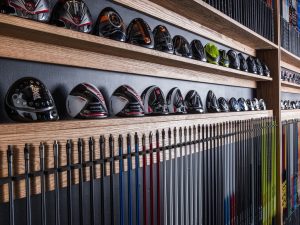
So how do you separate the good from the bad? This is the million-dollar question for golfers looking to get fit. Unless you have experience going through a fitting before or have a base knowledge about fitting, it can feel like an intimidating process. This guide is built to help you ask the right questions and pay attention to the right things to make sure you are getting the most out of your fitting.
The signs of a great fitter
- Launch monitor experience: Having some type of launch monitor certification isn’t a requirement but being able to properly understand the interpret parameters is! A good fitter should be able to explain the parameters they are using to help get the right clubs and understand how to tweak specs to help you get optimized. The exact labeling may vary depending on the type of launch monitor but they all mostly provide the same information….Here is an example of what a fitter should be looking for in an iron fitting: “The most important parameter in an iron fitting”
- Communication skills: Being able to explain why and how changes are being made is a telltale sign your fitter is knowledgeable—it should feel like you are learning something along the way. Remember, communication is a two-way street so also being a good listener is another sign your working with a good fitter.
- Transparency: This involves things like talking about price, budgets, any brand preferences from the start. This prevents getting handed something out of your price range and wasting swings during your fit.
- A focus on better: Whether it be hitting it further and straighter with your driver or hitting more greens, the fitting should be goal-orientated. This means looking at all kinds of variables to make sure what you are getting is actually better than your current clubs. Having a driver you hit 10 yards farther isn’t helpful if you don’t know where it’s going….A great fitter that knows their stuff should quickly be able to narrow down potential options to 4-5 and then work towards optimizing from there.
- Honesty and respect: These are so obvious, I shouldn’t even have to put it on the list. I want to see these traits from anybody in a sales position when working with customers that are looking to them for knowledge and information…If you as the golfer is only seeing marginal gains from a new product or an upgrade option, you should be told that and given the proper information to make an informed decision. The great fitters, and I’ve worked with a lot of them, will be quick to tell a golfer, “I don’t think we’re going to beat (X) club today, maybe we should look at another part of your bag where you struggle.” This kind of interaction builds trust and in the end results in happy golfers and respected fitters.
The signs of a bad fitter
- Pushing an agenda: This can come in all kinds of shapes and sizes. Whether it be a particular affinity towards certain brands of clubs or even shafts. If you talk to players that have all been to the same fitter and their swings and skill levels vary yet the clubs or brands of shafts they end up with (from a brand agnostic facility) seem to be eerily similar it might be time to ask questions.
- Poor communications: As you are going through the fitting process and warming up you should feel like you’re being interviewed as a way to collect data and help solve problems in your game. This process helps create a baseline of information for your fitter. If you are not experiencing that, or your fitter isn’t explaining or answering your questions directly, then there is a serious communication problem, or it could show lack of knowledge depth when it comes to their ability.
- Lack of transparency: If you feel like you’re not getting answers to straightforward questions or a fitter tells you “not to worry about it” then that is a big no-no from me.
Side note: It is my opinion that golfers should pay for fittings, and in a way consider it a knowledge-gathering session. Of course, the end goal for the golfer is to find newer better fitting clubs, and for the fitter to sell you them (let’s be real here), but you should never feel the information is not being shared openly. - Pressure sales tactics: It exists in every industry, I get it, but if you pay for your fitting you are paying for information, use it to your advantage. You shouldn’t feel pressured to buy, and it’s always OK to seek out a knowledgeable second opinion (knowledgeable being a very key word in that sentence!). If you are getting the hard sell or any combination of the traits above, there is a good chance you’re not working with the right fitter for you.
Final thoughts
Great fitters with great reputations and proper knowledge have long lists, even waiting lists, of golfers waiting to see them. The biggest sign of a great fitter is a long list of repeat customers.
Golf is a game that can be played for an entire lifetime, and just like with teachers and swing coaches, the good ones are in it for the long haul to help you play better and build a rapport—not just sell you the latest and greatest (although we all like new toys—myself included) because they can make a few bucks.
Trust your gut, and ask questions!
- LIKE424
- LEGIT67
- WOW9
- LOL12
- IDHT8
- FLOP8
- OB5
- SHANK40
Instruction
The Wedge Guy: The easiest-to-learn golf basic

My golf learning began with this simple fact – if you don’t have a fundamentally sound hold on the golf club, it is practically impossible for your body to execute a fundamentally sound golf swing. I’m still a big believer that the golf swing is much easier to execute if you begin with the proper hold on the club.
As you might imagine, I come into contact with hundreds of golfers of all skill levels. And it is very rare to see a good player with a bad hold on the golf club. There are some exceptions, for sure, but they are very few and very far between, and they typically have beat so many balls with their poor grip that they’ve found a way to work around it.
The reality of biophysics is that the body moves only in certain ways – and the particulars of the way you hold the golf club can totally prevent a sound swing motion that allows the club to release properly through the impact zone. The wonderful thing is that anyone can learn how to put a fundamentally sound hold on the golf club, and you can practice it anywhere your hands are not otherwise engaged, like watching TV or just sitting and relaxing.
Whether you prefer an overlap, interlock or full-finger (not baseball!) grip on the club, the same fundamentals apply. Here are the major grip faults I see most often, in the order of the frequency:
Mis-aligned hands
By this I mean that the palms of the two hands are not parallel to each other. Too many golfers have a weak left hand and strong right, or vice versa. The easiest way to learn how to hold the club with your palms aligned properly is to grip a plain wooden ruler or yardstick. It forces the hands to align properly and shows you how that feels. If you grip and re-grip a yardstick several times, then grip a club, you’ll see that the learning curve is almost immediate.
The position of the grip in the upper/left hand
I also observe many golfers who have the butt of the grip too far into the heel pad of the upper hand (the left hand for right-handed players). It’s amazing how much easier it is to release the club through the ball if even 1/4-1/2″ of the butt is beyond the left heel pad. Try this yourself to see what I mean. Swing the club freely with just your left hand and notice the difference in its release from when you hold it at the end of the grip, versus gripping down even a half inch.
To help you really understand how this works, go to the range and hit shots with your five-iron gripped down a full inch to make the club the same length as your seven-iron. You will probably see an amazing shot shape difference, and likely not see as much distance loss as you would expect.
Too much lower (right) hand on the club
It seems like almost all golfers of 8-10 handicap or higher have the club too far into the palm of the lower hand, because that feels “good” if you are trying to control the path of the clubhead to the ball. But the golf swing is not an effort to hit at the ball – it is a swing of the club. The proper hold on the club has the grip underneath the pad at the base of the fingers. This will likely feel “weak” to you — like you cannot control the club like that. EXACTLY. You should not be trying to control the club with your lower/master hand.
Gripping too tightly
Nearly all golfers hold the club too tightly, which tenses up the forearms and prevents a proper release of the club through impact. In order for the club to move back and through properly, you must feel that the club is controlled by the last three fingers of the upper hand, and the middle two fingers of the lower hand. If you engage your thumbs and forefingers in “holding” the club, the result will almost always be a grip that is too tight. Try this for yourself. Hold the club in your upper hand only, and squeeze firmly with just the last three fingers, with the forefinger and thumb off the club entirely. You have good control, but your forearms are not tense. Then begin to squeeze down with your thumb and forefinger and observe the tensing of the entire forearm. This is the way we are made, so the key to preventing tenseness in the arms is to hold the club very lightly with the “pinchers” — the thumbs and forefingers.
So, those are what I believe are the four fundamentals of a good grip. Anyone can learn them in their home or office very quickly. There is no easier way to improve your ball striking consistency and add distance than giving more attention to the way you hold the golf club.
More from the Wedge Guy
- The Wedge Guy: Golf mastery begins with your wedge game
- The Wedge Guy: Why golf is 20 times harder than brain surgery
- The Wedge Guy: Musings on the golf ball rollback
- LIKE83
- LEGIT13
- WOW4
- LOL1
- IDHT0
- FLOP4
- OB1
- SHANK8
19th Hole
Vincenzi’s 2024 Texas Children’s Houston Open betting preview

As the Florida swing comes to an end, the PGA Tour makes its way to Houston to play the Texas Children’s Houston Open at Memorial Park Golf Course.
This will be the fourth year that Memorial Park Golf Course will serve as the tournament host. The event did not take place in 2023, but the course hosted the event in 2020, 2021 and 2022.
Memorial Park is a par-70 layout measuring 7,432 yards and features Bermudagrass greens. Historically, the main defense for the course has been thick rough along the fairways and tightly mown runoff areas around the greens. Memorial Park has a unique setup that features three Par 5’s and five Par 3’s.
The field will consist of 132 players, with the top 65 and ties making the cut. There are some big names making the trip to Houston, including Scottie Scheffler, Wyndham Clark, Tony Finau, Will Zalatoris and Sahith Theegala.
Past Winners at Memorial Park
- 2022: Tony Finau (-16)
- 2021: Jason Kokrak (-10)
- 2020: Carlos Ortiz (-13)
In this article and going forward, I’ll be using the Rabbit Hole by Betsperts Golf data engine to develop my custom model. If you want to build your own model or check out all of the detailed stats, you can sign up using promo code: MATTVIN for 25% off any subscription package (yearly is best value).
Key Stats For Memorial Park
Let’s take a look at several metrics for Memorial Park to determine which golfers boast top marks in each category over their last 24 rounds:
Strokes Gained: Approach
Memorial Park is a pretty tough golf course. Golfers are penalized for missing greens and face some difficult up and downs to save par. Approach will be key.
Total Strokes Gained: Approach per round in past 24 rounds:
- Tom Hoge (+1.30)
- Scottie Scheffler (+1.26)
- Keith Mitchell (+0.97)
- Tony Finau (+0.92)
- Jake Knapp (+0.84)
Strokes Gained: Off the Tee
Memorial Park is a long golf course with rough that can be penal. Therefore, a combination of distance and accuracy is the best metric.
Total Strokes Gained: Off the Tee per round in past 24 rounds:
- Scottie Scheffler (+0.94)
- Kevin Dougherty (+0.93)
- Cameron Champ (+0.86)
- Rafael Campos (+0.84)
- Si Woo Kim (+0.70)
Strokes Gained Putting: Bermudagrass + Fast
The Bermudagrass greens played fairly fast the past few years in Houston. Jason Kokrak gained 8.7 strokes putting on his way to victory in 2021 and Tony Finau gained in 7.8 in 2022.
Total Strokes Gained Putting (Bermudagrass) per round past 24 rounds (min. 8 rounds):
- Adam Svensson (+1.27)
- Harry Hall (+1.01)
- Martin Trainer (+0.94)
- Taylor Montgomery (+0.88)
- S.H. Kim (+0.86)
Strokes Gained: Around the Green
With firm and undulating putting surfaces, holding the green on approach shots may prove to be a challenge. Memorial Park has many tightly mowed runoff areas, so golfers will have challenging up-and-down’s around the greens. Carlos Ortiz gained 5.7 strokes around the green on the way to victory in 2020.
Total Strokes Gained: Around the Green per round in past 24 rounds:
- Mackenzie Hughes (+0.76)
- S.H. Kim (+0.68)
- Scottie Scheffler (+0.64)
- Jorge Campillo (+0.62)
- Jason Day (+0.60)
Strokes Gained: Long and Difficult
Memorial Park is a long and difficult golf course. This statistic will incorporate players who’ve had success on these types of tracks in the past.
Total Strokes Gained: Long and Difficult in past 24 rounds:
- Scottie Scheffler (+2.45)
- Ben Griffin (+1.75)
- Will Zalatoris (+1.73)
- Ben Taylor (+1.53)
- Tony Finau (+1.42)
Course History
Here are the players who have performed the most consistently at Memorial Park.
Strokes Gained Total at Memorial Park past 12 rounds:
- Tyson Alexander (+3.65)
- Ben Taylor (+3.40)
- Tony Finau (+2.37)
- Joel Dahmen (+2.25)
- Patton Kizzire (+2.16)
Statistical Model
Below, I’ve reported overall model rankings using a combination of the five key statistical categories previously discussed.
These rankings are comprised of SG: App (24%) SG: OTT (24%); SG: Putting Bermudagrass/Fast (13%); SG: Long and Difficult (13%); SG: ARG (13%) and Course History (13%)
- Scottie Scheffler
- Wyndham Clark
- Tony Finau
- Joel Dahmen
- Stephan Jaeger
- Aaron Rai
- Sahith Theegala
- Keith Mitchell
- Jhonnatan Vegas
- Jason Day
- Kurt Kitayama
- Alex Noren
- Will Zalatoris
- Si Woo Kim
- Adam Long
2024 Texas Children’s Houston Open Picks
Will Zalatoris +2000 (Caesars)
Scottie Scheffler will undoubtedly be difficult to beat this week, so I’m starting my card with someone who I believe has the talent to beat him if he doesn’t have his best stuff.
Will Zalatoris missed the cut at the PLAYERS, but still managed to gain strokes on approach while doing so. In an unpredictable event with extreme variance, I don’t believe it would be wise to discount Zalatoris based on that performance. Prior to The PLAYERS, the 27-year-old finished T13, T2 and T4 in his previous three starts.
Zalatoris plays his best golf on long and difficult golf courses. In his past 24 rounds, he ranks 3rd in the category, but the eye test also tells a similar story. He’s contended at major championships and elevated events in the best of fields with tough scoring conditions. The Texas resident should be a perfect fit at Memorial Park Golf Club.
Alex Noren +4500 (FanDuel)
Alex Noren has been quietly playing some of his best golf of the last half decade this season. The 41-year-old is coming off back-to-back top-20 finishes in Florida including a T9 at The PLAYERS in his most recent start.
In his past 24 rounds, Noren ranks 21st in the field in Strokes Gained: Off the Tee, 30th in Strokes Gained: Around the Green, 25th in Strokes Gained: Total on long and difficult courses and 21st in Strokes Gained: Putting on fast Bermudagrass greens.
In addition to his strong recent play, the Swede also has played well at Memorial Park. In 2022, Noren finished T4 at the event, gaining 2.2 strokes off the tee and 7.0 strokes on approach for the week. In his two starts at the course, he’s gained an average of .6 strokes per round on the field, indicating he is comfortable on these greens.
Noren has been due for a win for what feels like an eternity, but Memorial Park may be the course that suits him well enough for him to finally get his elusive first PGA Tour victory.
Mackenzie Hughes +8000 (FanDuel)
Mackenzie Hughes found himself deep into contention at last week’s Valspar Championship before faltering late and finishing in a tie for 3rd place. While he would have loved to win the event, it’s hard to see the performance as anything other than an overwhelming positive sign for the Canadian.
Hughes has played great golf at Memorial Park in the past. He finished T7 in 2020, T29 in 2021 and T16 in 2022. The course fit seems to be quite strong for Hughes. He’s added distance off the tee in the past year or and ranks 8th in the field for apex height, which will be a key factor when hitting into Memorial Park’s elevated greens with steep run-off areas.
In his past 24 rounds, Hughes is the best player in the field in Strokes Gained: Around the Greens. The ability to scramble at this course will be extremely important. I believe Hughes can build off of his strong finish last week and contend once again to cement himself as a President’s Cup consideration.
Akshay Bhatia +8000 (FanDuel)
Akshay Bhatia played well last week at the Valspar and seemed to be in total control of his golf ball. He finished in a tie for 17th and shot an impressive -3 on a difficult Sunday. After struggling Thursday, Akshay shot 68-70-68 in his next three rounds.
Thus far, Bhatia has played better at easier courses, but his success at Copperhead may be due to his game maturing. The 22-year-old has enormous potential and the raw talent to be one of the best players in the world when he figures it all out.
Bhatia is a high upside play with superstar qualities and may just take the leap forward to the next stage of his career in the coming months.
Cameron Champ +12000 (FanDuel)
Cameron Champ is a player I often target in the outright betting market due to his “boom-or-bust” nature. It’s hard to think of a player in recent history with three PGA Tour wins who’s been as inconsistent as Champ has over the course of his career.
Despite the erratic play, Cam Champ simply knows how to win. He’s won in 2018, 2019 and 2021, so I feel he’s due for a win at some point this season. The former Texas A&M product should be comfortable in Texas and last week he showed us that his game is in a pretty decent spot.
Over his past 24 rounds, Champ ranks 3rd in Strokes Gained: Off the Tee and 30th in Strokes Gained: Total on long and difficult courses. Given his ability to spike at any given time, Memorial Park is a good golf course to target Champ on at triple digit odds.
Robert MacIntyre +12000 (FanDuel)
The challenge this week is finding players who can possibly beat Scottie Scheffler while also not dumping an enormous amount of money into an event that has a player at the top that looks extremely dangerous. Enter McIntyre, who’s another boom-or-bust type player who has the ceiling to compete with anyone when his game is clicking on all cylinders.
In his past 24 rounds, MacIntyre ranks 16th in the field in Strokes Gained: Off the Tee, 17th in Strokes Gained: Around the Green and 10th in Strokes Gained: Total on long and difficult courses.
MacIntyre’s PGA Tour season has gotten off to a slow start, but he finished T6 in Mexico, which is a course where players will hit driver on the majority of their tee shots, which is what we will see at Memorial Park. Texas can also get quite windy, which should suit MacIntyre. Last July, the Scot went toe to toe with Rory McIlroy at the Scottish Open before a narrow defeat. It would take a similar heroic effort to compete with Scheffler this year in Houston.
Ryan Moore +15000 (FanDuel)
Ryan Moore’s iron play has been absolutely unconscious over his past few starts. At The PLAYERS Championship in a loaded field, he gained 6.1 strokes on approach and last week at Copperhead, he gained 9.0 strokes on approach.
It’s been a rough handful of years on Tour for the 41-year-old, but he is still a five-time winner on the PGA Tour who’s young enough for a career resurgence. Moore has chronic deterioration in a costovertebral joint that connects the rib to the spine, but has been getting more consistent of late, which is hopefully a sign that he is getting healthy.
Veterans have been contending in 2024 and I believe taking a flier on a proven Tour play who’s shown signs of life is a wise move at Memorial Park.
- LIKE15
- LEGIT1
- WOW1
- LOL0
- IDHT0
- FLOP0
- OB0
- SHANK2
Opinion & Analysis
Ryan: Why the race to get better at golf might be doing more harm than good

B.F. Skinner was one of the most important psychologists of the 20th century, developing the foundation of the development of reinforcement, and in doing so, creating the concept of behaviorism. In simple terms, this means that we are conditioned by our habits. In practical terms, it explains the divide between the few and far between elite instructors and college coaches.
To understand the application, let’s quickly review one of B.F. Skinner’s most important experiments; superstitions in the formation of behavior by pigeons. In this experiment, food was dispensed to pigeons at random intervals. Soon, according to Skinner, the pigeons began to associate whatever action they were doing at the time of the food being dispensed. According to Skinner, this conditioned that response and soon, they simply haphazardly repeated the action, failing to distinguish between cause and correlation (and in the meantime, looking really funny!).
Now, this is simply the best way to describe the actions of most every women’s college golf coach and too many instructors in America. They see something work, get positive feedback and then become conditioned to give the feedback, more and more, regardless of if it works (this is also why tips from your buddies never work!).
Go to a college event, particularly a women’s one, and you will see coaches running all over the place. Like the pigeons in the experiment, they have been conditioned into a codependent relationship with their players in which they believe their words and actions, can transform a round of golf. It is simply hilarious while being equally perturbing
In junior golf, it’s everywhere. Junior golf academies make a living selling parents that a hysterical coach and over-coaching are essential ingredients in your child’s success.
Let’s be clear, no one of any intellect has any real interest in golf — because it’s not that interesting. The people left, including most coaches and instructors, carve out a small fiefdom, usually on the corner of the range, where they use the illusion of competency to pray on people. In simple terms, they baffle people with the bullshit of pseudo-science that they can make you better, after just one more lesson.
The reality is that life is an impromptu game. The world of golf, business, and school have a message that the goal is being right. This, of course, is bad advice, being right in your own mind is easy, trying to push your ideas on others is hard. As a result, it is not surprising that the divorce rate among golf professionals and their instructors is 100 percent. The transfer rate among college players continues to soar, and too many courses have a guy peddling nefarious science to good people. In fact, we do at my course!
The question is, what impact does all this have on college-age and younger kids? At this point, we honestly don’t know. However, I am going to go out on a limb and say it isn’t good.
Soren Kierkegaard once quipped “I saw it for what it is, and I laughed.” The actions of most coaches and instructors in America are laughable. The problem is that I am not laughing because they are doing damage to kids, as well as driving good people away from this game.
The fact is that golfers don’t need more tips, secrets, or lessons. They need to be presented with a better understanding of the key elements of golf. With this understanding, they can then start to frame which information makes sense and what doesn’t. This will emancipate them and allow them to take charge of their own development.
- LIKE14
- LEGIT4
- WOW1
- LOL2
- IDHT0
- FLOP1
- OB0
- SHANK11
-

 19th Hole2 weeks ago
19th Hole2 weeks agoJohn Daly stuns fans into silence with brutal opening tee shot on PGA Tour Champions
-

 19th Hole4 days ago
19th Hole4 days agoThings got heated at the Houston Open between Tony Finau and Alejandro Tosti. Here’s why
-

 19th Hole1 day ago
19th Hole1 day agoReport: Tiger Woods has ‘eliminated sex’ in preparation for the 2024 Masters
-

 19th Hole2 weeks ago
19th Hole2 weeks ago2-time major champ announces shock retirement from the sport at age of 33
-

 19th Hole2 weeks ago
19th Hole2 weeks agoCharlie Woods finds it tough going on American Junior Golf Association debut
-

 19th Hole2 weeks ago
19th Hole2 weeks agoEdoardo Molinari reveals the latest PGA Tour golfer to turn down ‘good offer’ from LIV Golf
-

 19th Hole3 weeks ago
19th Hole3 weeks agoScottie Scheffler had an interesting response when asked how he ‘quiets the noise’ following Players victory
-

 19th Hole2 weeks ago
19th Hole2 weeks agoJon Rahm dealt fresh blow to hopes of qualifying for 2025 Ryder Cup






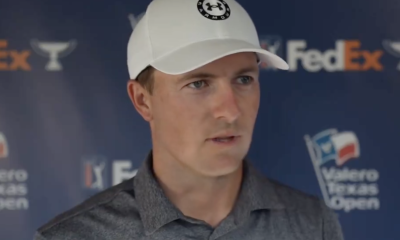



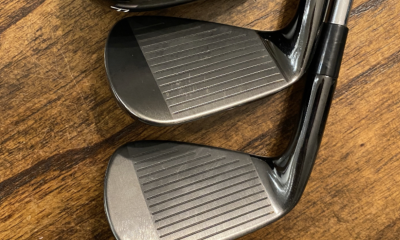



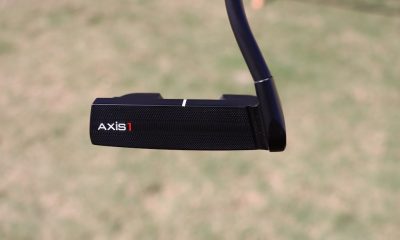














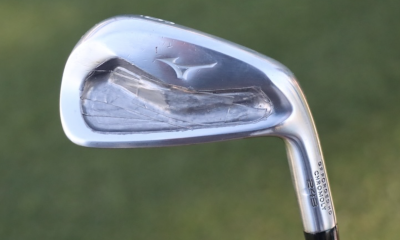

emncaity
Feb 9, 2021 at 2:15 am
“orientated”
[giggle]
But here’s a question, and I don’t understand why it’s not asked more often: Why don’t people simply get educated about what length and lie should be for their own measurements, what kind of spin rates you’re looking for on various clubs, and what tends to produce those optimal rates (and dispersions too)? It’s not exactly rocket science. A few hours will do wonders. Why don’t people simply do that, follow a reliable fitting chart for loft and lie (and adjust from there), just buy some time on Trackman or other analyzer, and do the numbers for themselves?
phizzy
Sep 25, 2020 at 6:29 pm
I have been fit numerous times over the years starting in 2008. First fitter I went to didn’t give me the opportunity to hear my input and kept pushing certain club heads and shafts. He did play on the PGA for less than a full season as he claimed(did my research),so I thought he was credible. Boy was I wrong. He fit me into a super tri with fubuki alpha 60x and it would balloon on me with too much spin. Less than a year later I found another fitter and have been giving my business to him ever since. He was always asking for my input and never pushed products. He would give me the info from his trackman and would recommend what would best suit me. Recently, I did a driver fitting with him and walked away with a SIM Max with Ventus Black 7x tipped one inch at 45 inches. Hitting 320 total yard bombs with minimal dispersion and am very happy. A good club fitter is essential to maximizing your time out on the course.
SteveT
Sep 2, 2020 at 10:59 am
Any iron fitting I’ve experienced, either for myself or a friend, always involves using the demo 6/7 iron from any set, and this involves those often on the overrated “Top 100 Fitters List” With all this talk about proper fitting, I doubt the typical customer ever reaps the benefits of things like set gapping. I do believe a real fitting is only experienced by those privileged enough to visit an OEM performance center or similar facility.
Speedy
Aug 30, 2020 at 4:47 pm
“The biggest sign of a great fitter is a long list of repeat customers.”
I don’t think so.
BG
Aug 19, 2020 at 2:12 pm
Everyone and their dog is a fitter these days; finding a good one is indeed a challenge. What’s even more frustrating is when the custom clubs you order do not come back to the specifications for which you were fit. Frustrating when you are expecting D4, and everything comes back D2.5. I’ve struggled with OEM’s, and custom builders alike. It’s a big ball of mess out there if you ask me.
Joe Beau
Aug 18, 2020 at 10:04 am
Ok. How about providing us with a list of some qualified fitters? I haven’t heard of 1 within 100 miles of me.
Alistair Harper
Aug 17, 2020 at 3:11 pm
I’ve been fortunate to have as a best friend, one of the top fitters in the industry, Larry Bobka who has fit my clubs for decades and it makes a WORLD of difference. Over the years Larry has put people like Tiger, Phil, Adam and hundreds more pros into the best set-ups for their game. Cannot overestimate the value of a quality club fitting by a great fitter.
Peter
Aug 14, 2020 at 11:30 pm
Upgrading after 20 years, I had my heart set on some WS irons. Got measured and hit some balls. It turned out that I wasn’t up to standard for the ‘player irons’ I was hoping for. I was given 6 iclubs from different manufacturers to hit with the instruction of not looking at the names on the iron. Found my preference and walked away with a set of i200s. After 3 years, still enjoy hitting them everyday
Jack Wullkotte
Aug 14, 2020 at 3:13 pm
How come you did’t print my response to your article about club fitters?
joro
Aug 14, 2020 at 5:53 pm
That happens a lot.
joro
Aug 14, 2020 at 12:46 pm
Being a teacher and fitter myself I think about 10% of the “Fitters” are really Qualified to do a proper and good fitting. Most are guys that are given the job because they are apprentices or just a good player. As a former club maker for a Major manufacturer
and making clubs for Tour Players what they need in way of shafts, grips, lie angle, and balance, which is something that most Club Fitters overlook, the small but important stuff.
I have known my own specs for years but even so when I went to a Major Club manufaturer for a fitting as a staff member the guy who fit me who was supposed to be one of their best fitters said to me forget the past, you are over 60 so you need to go to SR. flex and lighter. I was playing stiff and heavier at the time and very well at the time. So he fit me and sent me off with 2 sets of “Expertly fitted” clubs. They were awful!!!! So I rebuilt them to my specs and they were great. That was one of the top fitters at the fitting range. Soooo, take it as you may, and never have a fitting indoors, you have see the full flight of the ball to determine what you really need.
Leftshot
Aug 14, 2020 at 11:13 am
A few things missing. How comprehensive is the fitting? Are you fit for length,lie angle, swing weigh, other shaft and head characteristics, or just offered two shafts one with an R stamped on it and one with an S. The fitting should be done with YOUR ball of choice.
Kevin Coombs, PGA
Aug 14, 2020 at 12:08 am
Properly fitted golf clubs reward and encourage the proper motion and give correct feedback for incorrect motion.
DW
Aug 13, 2020 at 6:40 pm
Can’t help but notice that the covering picture is indeed the fitting studio of the one and only TXG at Toronto…
Randy
Aug 13, 2020 at 11:19 am
FIRST TAKE SOME LESSONS!
It don’t mean a thing if you don’t have a swing.
JJ
Aug 13, 2020 at 10:09 am
Good fitter fits you for club length…bad fitter doesn’t. How many friends I have that got “fitted” but they never got fit for club length…especially in a driver fitting. I’ll just take my money and get lessons.
JThunder
Aug 13, 2020 at 1:02 am
“Experience, communication skills, transparency, a focus on better, honesty and respect”
“pushing an agenda, poor communication, lack of transparency, pressure sales tactics”
Not just a list of good/bad for golf clubfitters, is it?
Finding a good club fitter is similar to finding a good teaching pro. Some are objectively better than others; also important is finding the “right one for you”.
You may have to try a couple before you find a good fit – if you’re serious about getting fit, think of it like a test drive or a serious medical condition; you likely won’t stop at one opinion. And once you find that fitter, stick with them. Just like a good doctor, understanding your patient can be as important as understanding the medicine.
You can tinker on your own – but a really good clubfitter will gain more knowledge in a week that you will in a year, and it will be a costly year. You can also use WebMD to diagnose your own medical conditions.
Karsten's Ghost
Aug 12, 2020 at 5:47 pm
For most people, your indoor swing is not your outdoor swing. Your turf interaction is not your plastic turf interaction.
Hitting mats hide lie angle issues, promote loft, and bad balls promote spin. Cheap balls are not true flight…
If a fitter starts with bad data, they will fit you to that bad data. It doesn’t mean they’re not trying, but unless they can accurately account for variances (v unlikely), you’ll get fitting data to be a fantastic driving range king.
The worst part is you’ll go back to the range, everything will seem fine, and you’ll continue to guess at what you’re doing wrong on-course.
Doug
Aug 14, 2020 at 10:33 am
“Your indoor swing is not your outdoor swing?” Pure nonsense.
I would submit that ideally an outdoor fitting is preferable to an indoor fitting only because of visual ball flight confirmation against computer generated flight info. But an indoor fitting is completely acceptable.
juststeve
Aug 12, 2020 at 3:53 pm
I’m wondering if there is an objective standard by which to judge a fitter or the correctness of the particular fit recommended?
TacklingDummy
Aug 12, 2020 at 3:01 pm
There is a couple of metrics that I don’t think get fit well by many fitters is shaft torque and clubhead shape for drivers. A good club fitter will fit torque well based on the swing, strength/weakness, the launch numbers, etc. Well fitted torque to a swing can improve accuracy a lot without much sacrifice in distance.
Also, clubhead shape can have a substantial effect ball flight, controlling the face, and accuracy because of the different weighting. I think really good fitters know to fit a driver head shape and weighting that will fit a players swing. If a player has more/less face rotation in the swing and swing plane. Much like weighting of putters and the stroke (more face rotation-more toe hang, less face rotation-more face balanced putter).
Many golf fitters of course want to sell product. I get that. However, the not so good ones I have been to really try to keep you focusing on the the best shot you hit, rather than the best groupings. Most manufacturers do the same because they push distance more than accuracy. Personally, I want the driver that give me a tighter dispersion without too much loss in distance, not the driver I hit 15 yards longer on 1/10 and had 3/10 off the map.
While many good players can adapt to a driver, it is best to get one fit well to adapt the driver to the swing.
A. Commoner
Aug 12, 2020 at 2:25 pm
Please!! Proof reader needed.
SV
Aug 12, 2020 at 1:55 pm
Based on my experience a couple of years ago, there were a number of things missing. This was with a national fitting company. It seemed like a science experiment, try this, try that with no explanation. He kept emphasizing 1 or 2 mile per hour ball speed and better smash factor. The recommended driver didn’t carry as far and total distance was the same as my 6 year old driver. This was with a $200 upgrade shaft. Needless to say, I didn’t buy a new $800 driver.
Fitting may be recommended, but based on my experience, I can go to a big box store and experiment on my own. My preference would be to try at an outdoor range, either golf course or driving range, where you can actually see what is happening. Hopefully they would have a launch monitor, but I don’t think it is necessary.
Stephen Hodge
Aug 12, 2020 at 2:45 pm
Seeing ball flight at a driving range means nothing. You’re hitting a driving range golf ball that has probably seen thousands of hits in its lifetime. You’re also hitting outside with variables, like wind and temperature. You are subconsciously making adjustments to your swing to see the ball flight you like. The ball flight you see on the range with range balls is never the flight you see on the course with premium golf balls. Your experience with the fitting you had should not cancel out the other fitters around you or in other areas.
tom
Aug 12, 2020 at 3:05 pm
Gotta be outside.. wh said anything about range balls? A GODD fitter will use pro v1s or a comparable ball. Mats are forgiving. Turf interaction is one the most important things when getting fit for irons.
JJ
Aug 13, 2020 at 10:11 am
Goes to range and gets fitted…swings out of shoes about 40 times and gets fitted for the club that makes the fitter the most money.
DW
Aug 13, 2020 at 6:37 pm
Unfortunately the combo of outdoor and premium ball fitter is not that common. One can argue that indoor fitting while using one’s own ball may be a good “compromise”
Michele
Aug 12, 2020 at 1:54 pm
Where in Westchester ny or lower ct is a good club fitter
Eric
Aug 19, 2020 at 8:46 am
How much the player improves